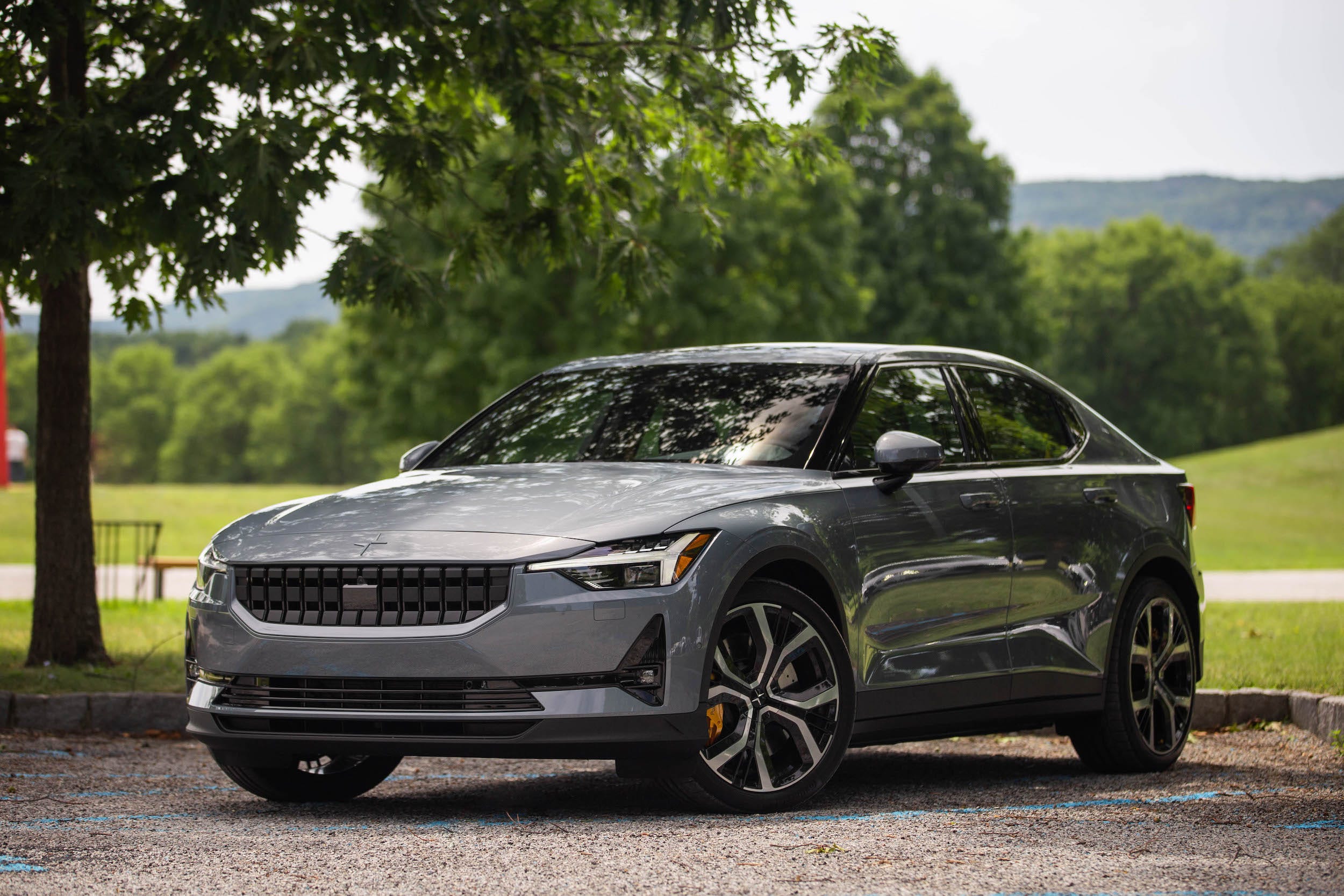
Kristen Lee/Business Insider
- The Polestar 2 is the first all-electric car from Polestar, a new brand from Volvo and Geely.
- It competes against the Tesla Model 3, Jaguar I-Pace, and Audi e-Tron.
- Prices start at $59,900.
- Visit Business Insider’s homepage for more stories.
The future-is-now characteristics are the same. The same big infotainment screen, the same minimalist interior, the same zip when the right pedal goes down. Take away my sight, and I’d be tempted to guess I’m at the wheel of the Tesla Model 3, about as good an electric car as can be driven. But I’d know better because something feels different: Things here are more substantive, more satisfying.
The interior is built to be something an actual human would use and enjoy – not a button-free, avant-garde exercise in alternative design. This is the all-new Polestar 2, you see, and it drives like a finished version of the Model 3.
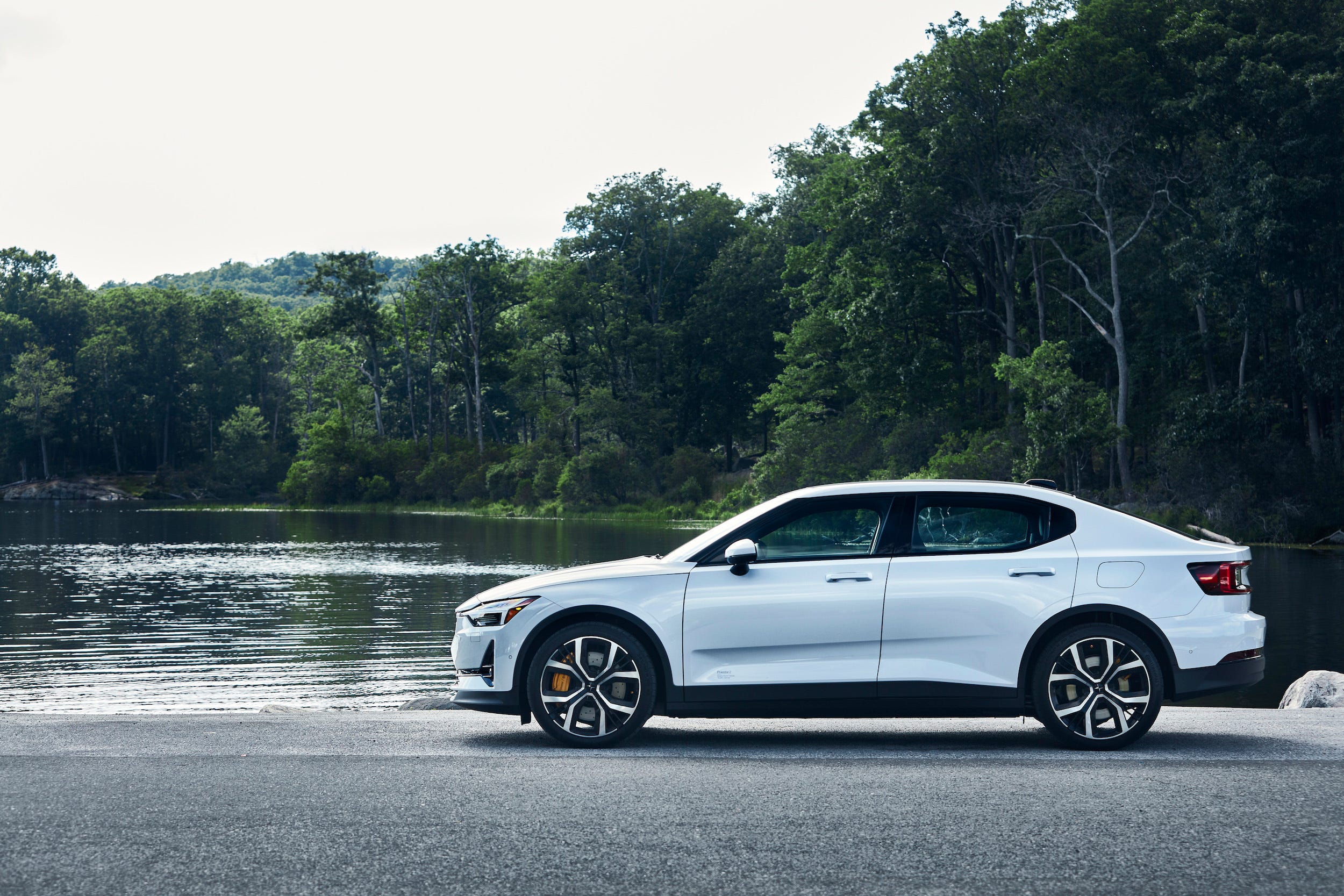
Polestar
Polestar as a brand might be new. But it comes from people who very much know how to build a car, and build one well. This is a piece of the future worth looking forward to.
The 2021 Polestar 2: Cut from a new brand
Polestar was launched in October 2017 as a standalone, electrified brand from Volvo and its Chinese parent company, Geely. Despite its global headquarters located at the Volvo campus in Gothenburg, Sweden, Polestar markets itself away from its Swedish sibling. Don’t call it a Volvo, because it’s not.
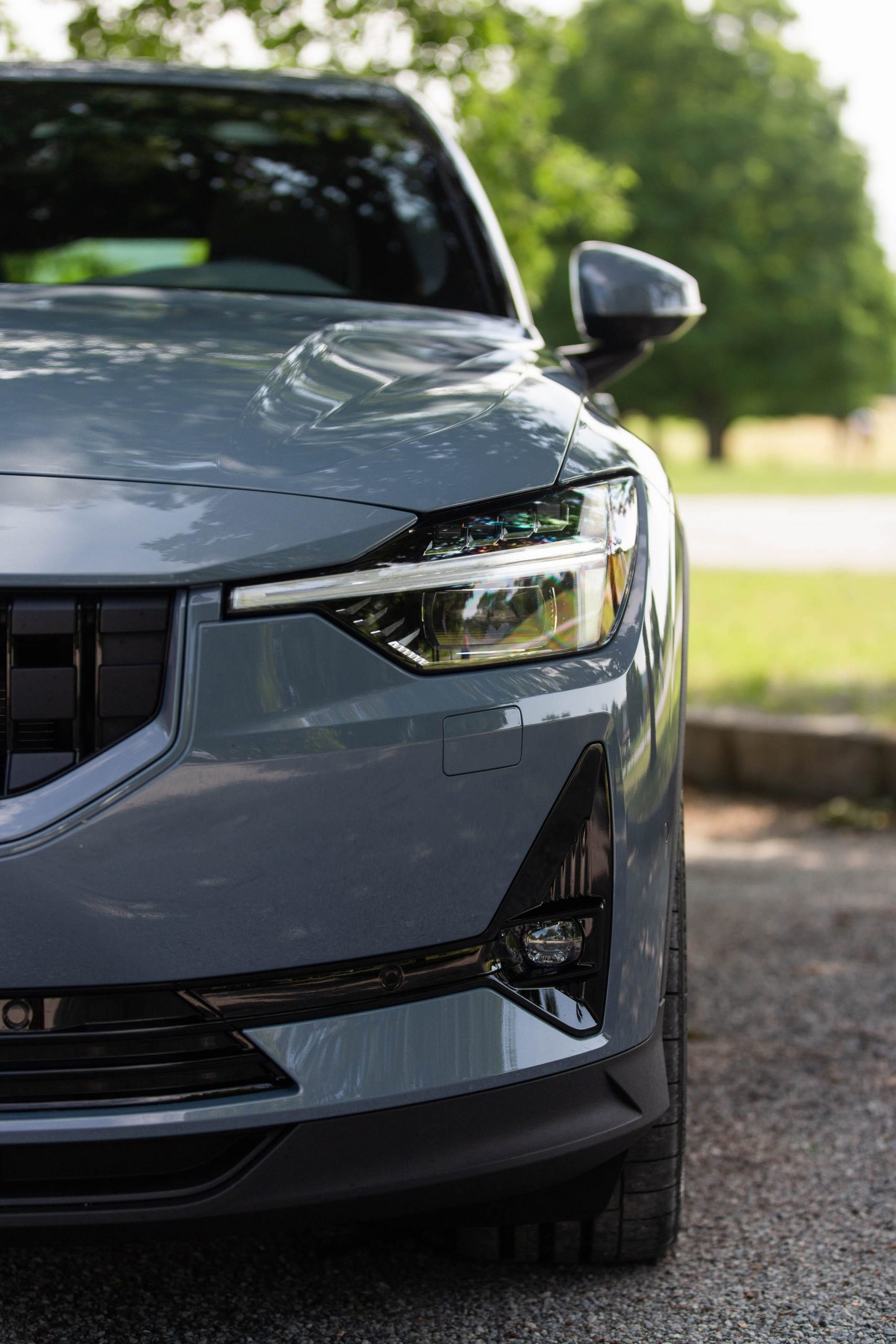
Kristen Lee/Business Insider
The first Polestar model was the Polestar 1: an agonizingly stylish, high-performance hybrid with a face similar to the Volvo S90. Next came the Polestar 2: a battery-only electric sedan with a slopey C-pillar, and the company’s first EV.
Built in Luqiao, China, the Polestar 2 quickly established itself as a champion of sustainability. In addition to running without reliance on fossil fuels, the 2 also touts seat fabrics made from recycled plastic bottles, interior plastics made with waste cork products, and carpets woven from recycled fishing nets.
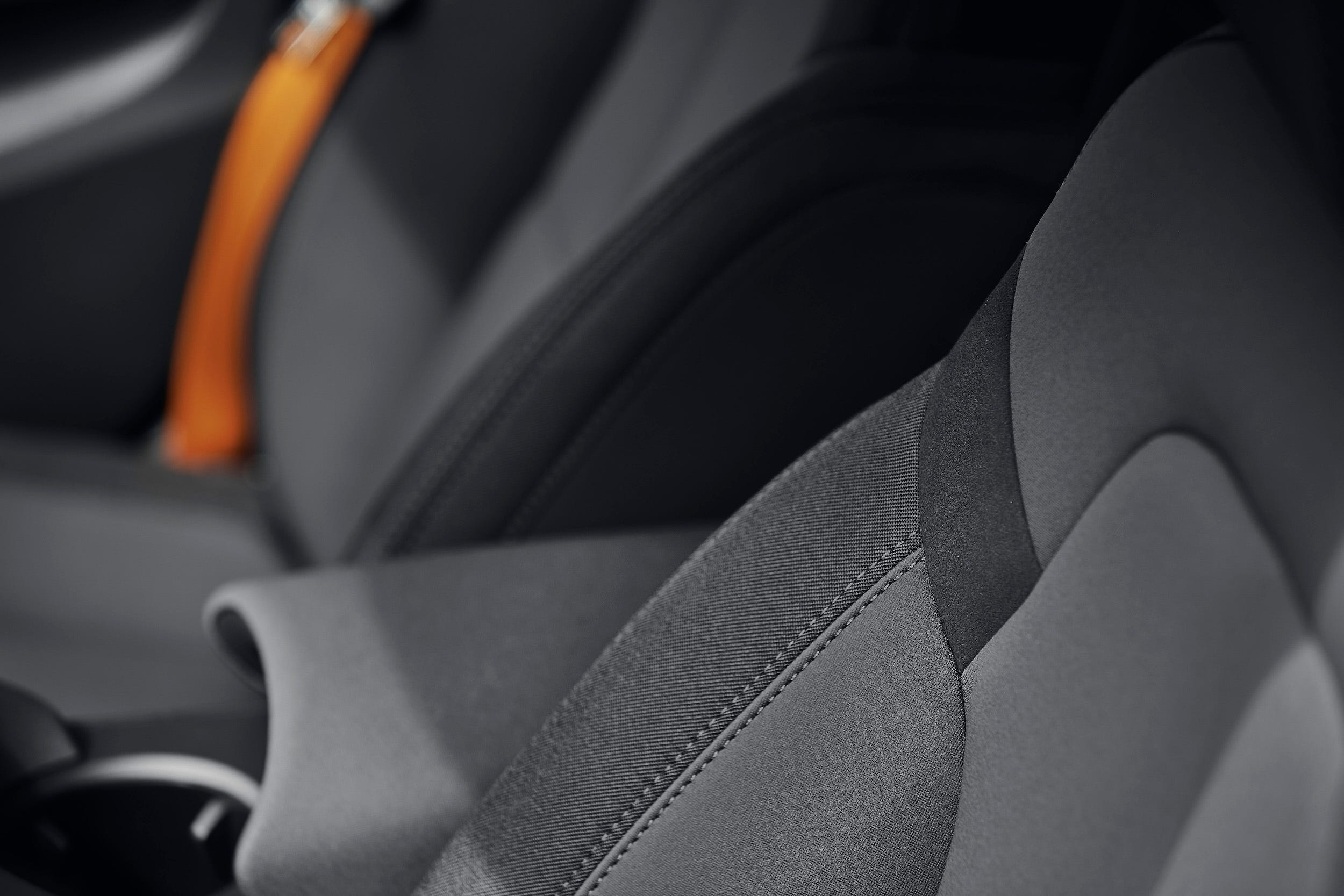
Polestar
While Polestar will only build 1,500 examples of the 1 globally due to its position as the brand messenger and halo car, the 2 is what the automaker hopes will be the volume seller. In 2021, Polestar aims to deliver tens of thousands.
Whereas Volvo's electrified future will always be somewhat reliant on hybrid cars, a Polestar spokesperson said that there is no internal-combustion engine future in its portfolio. It's going to be all battery-electric from here on out.

Kristen Lee/Business Insider
Details and safety ratings: Looks great on paper
Built on Volvo's Compact Modular Architecture, which debuted with the Volvo XC40 compact crossover, the 2 uses two electric motors connected to its front and rear axles. The car, then, is all-wheel drive. Total system output is a claimed 408 horsepower and 487 pound-feet of torque.
There's a 400-volt lithium-ion battery with a 78-kilowatt-hour capacity. DC charging - a type of fast charging - takes 40 minutes to reach 80% capacity at 150 kilowatts. Polestar estimates the 2 to hit 60 mph from a standstill in 4.5 seconds, 100 mph in 10.8 seconds, and do the quarter-mile in 12.76 seconds.

Kristen Lee/Business Insider
The Polestar 2's European WLTP range estimate is 291 miles, while the EPA gives it 233 miles. WLTP estimates tend to be more optimistic than EPA estimates.
At 15.1 feet long and 6.5 feet wide, the 2 is about the length of a Toyota RAV4, though about five inches wider. It weighs 4,680 pounds.
The Polestar 2 starts at $59,900, but debuted initially with a heavily loaded "launch edition" version that includes features such as the Pilot Assist driver-assistance technology, a Harman Kardon stereo system, and Android as its native operating system.
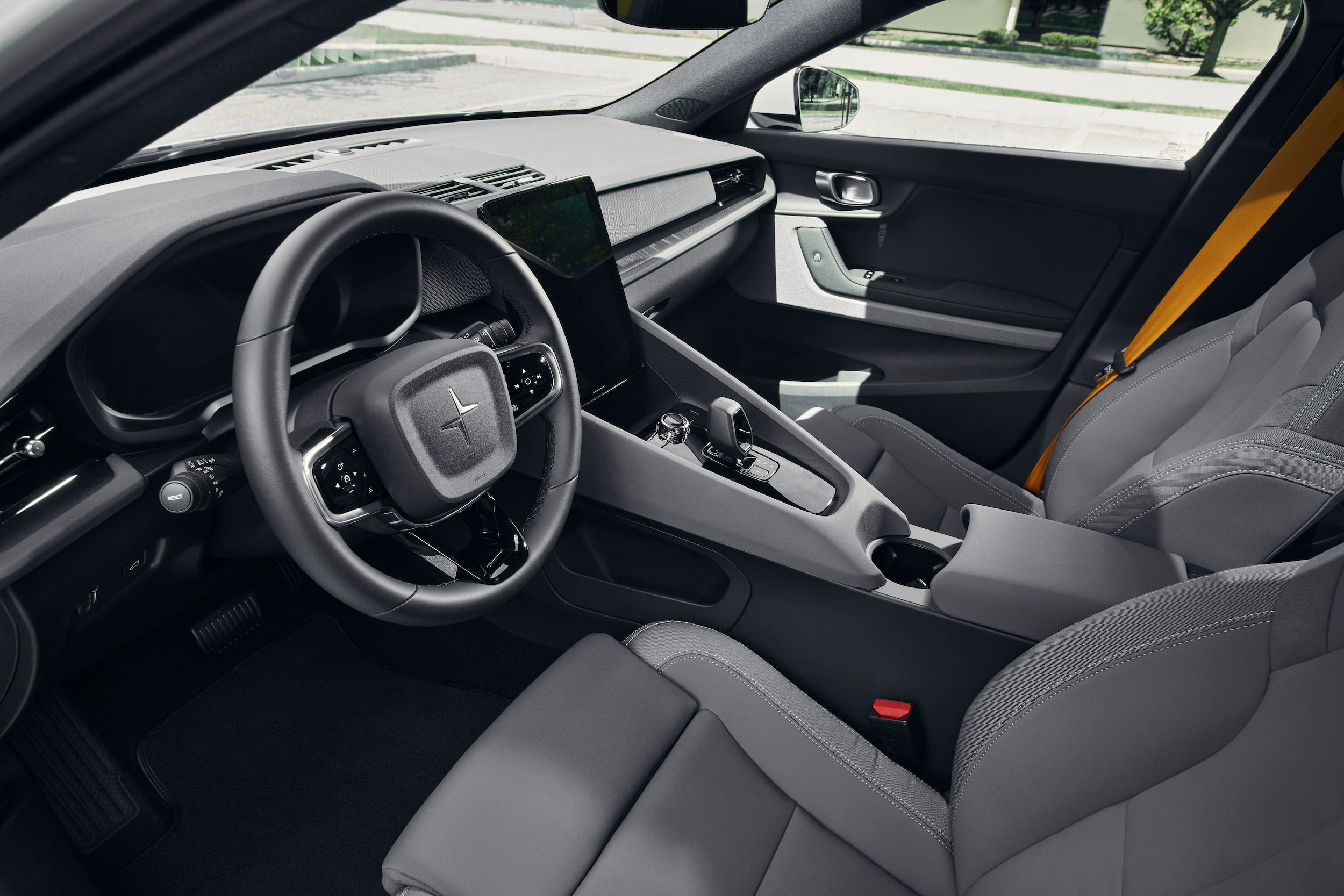
Polestar
A $5,000 Performance Pack adds Öhlins dampers, attractive gold Brembo front brake calipers, 20-inch aluminum wheels, sport tires, a black roof, and gold seatbelts and tire valve caps.
As of this writing, neither the Insurance Institute for Highway Safety nor the National Highway Traffic Safety Administration have safety rated the Polestar 2.
What stands out: A lot of people will ask you about it
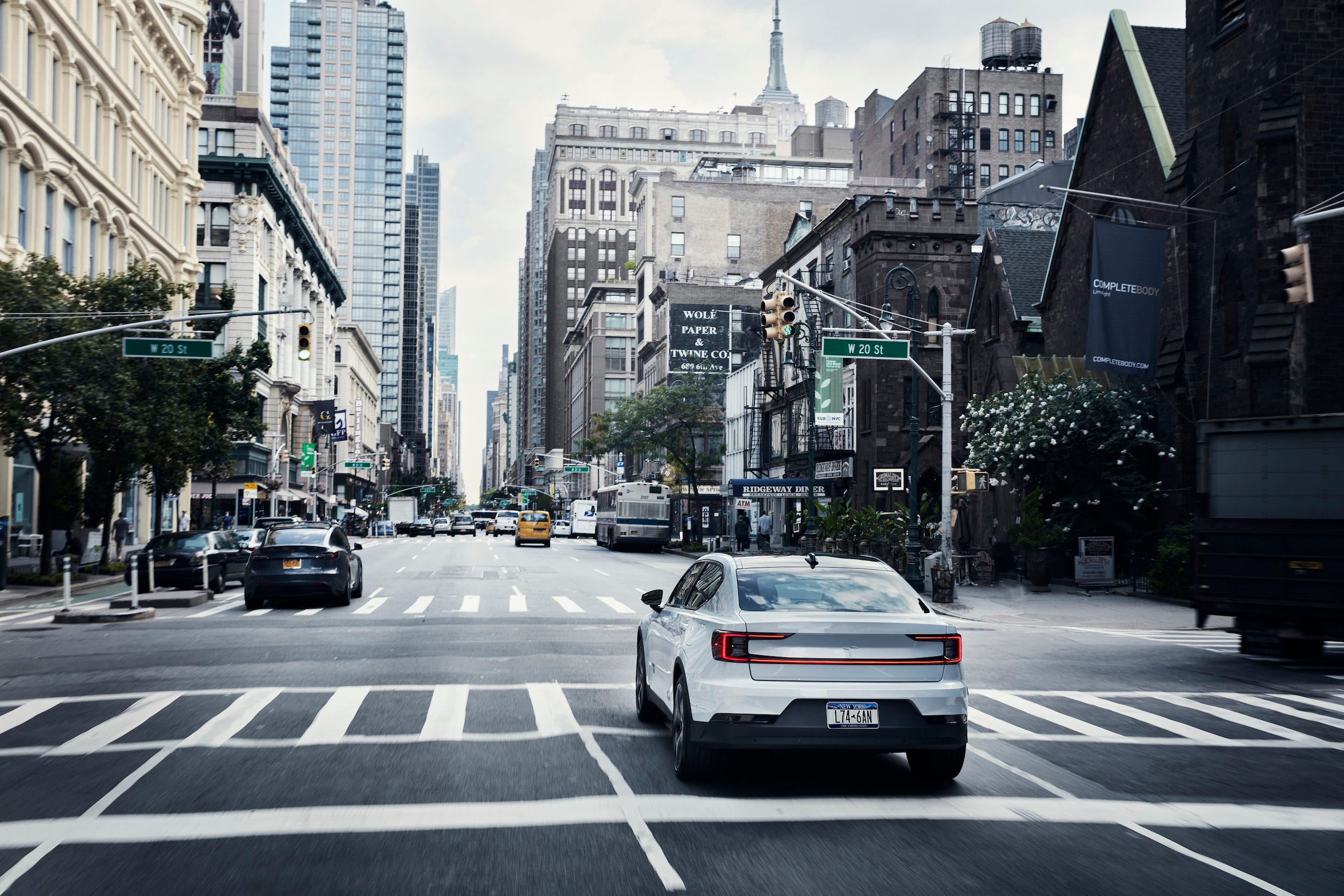
Polestar
A man in a white delivery van pulled up alongside the 2 while I sat at a red light on Madison Avenue in New York City. He was waving frantically. I rolled my window down.
"What is that?" he yelled.
"It's a Polestar!"
"What?"
"A POLESTAR! Electric car!"
"Who makes it?"
"Uh… Volvo."
"Huh." He studied it a bit longer. Nodded in approval. "Looks better than a Tesla!"
Later, someone standing on the sidewalk five blocks north shouted, "Yo! What is that?"
I couldn't answer, on account that I was already driving. But I wanted to. I wanted to tell everyone what this thing was.
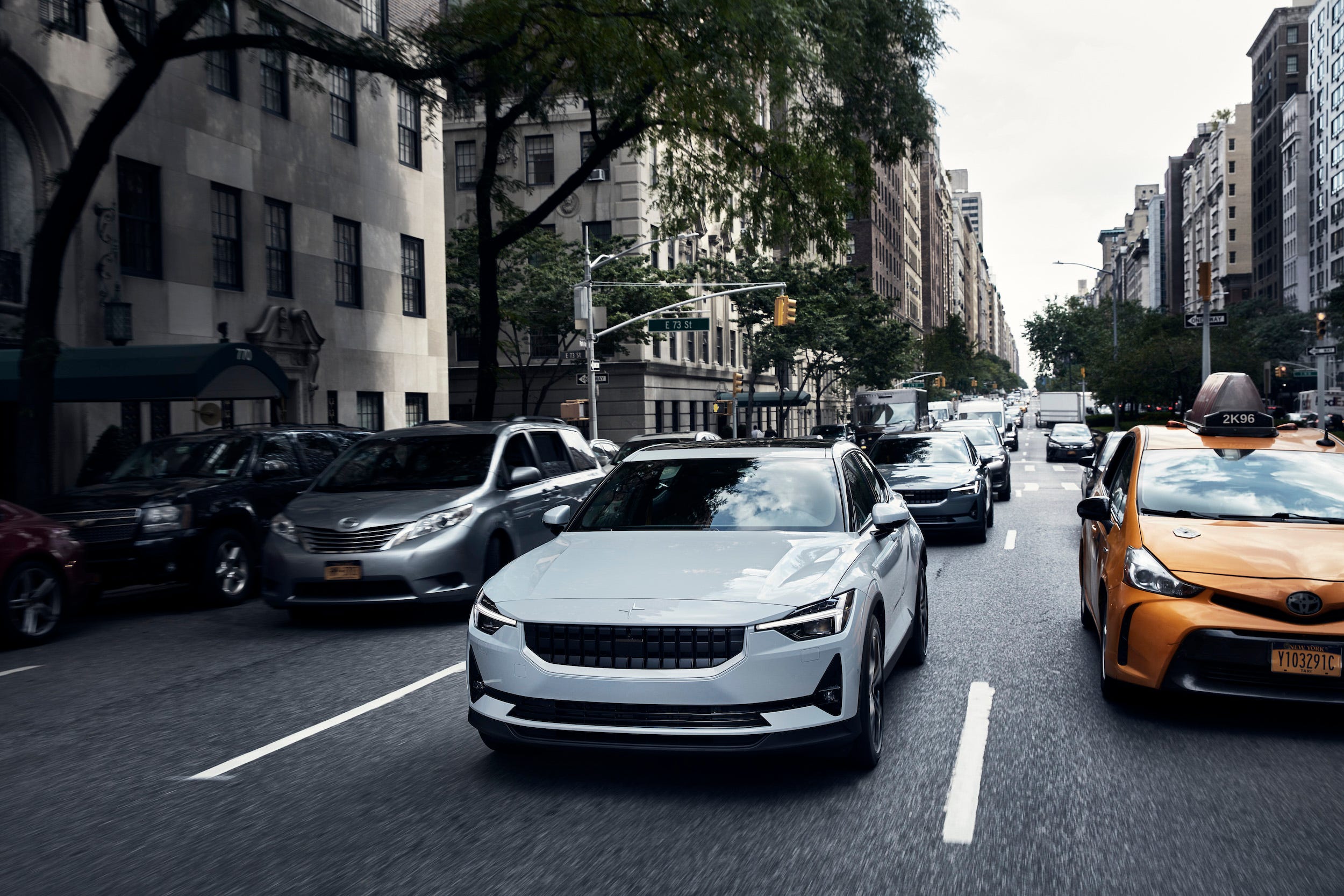
Polestar
Never did I imagine a sedan would be quite a showstopper like this. But it is. Everywhere I went, people stopped to gawk or did double-takes.
The truth is the 2 is striking to look at. Low and wide, its horizontally opposed design is just accentuated all the more by the Thor's Hammer daytime running lights carried over from its Volvo siblings. But whereas the Volvos wear the company crest slashed across their noses, Polestar is far more subtle. The Polestar logo is just a slightly embossed, body-colored thing.
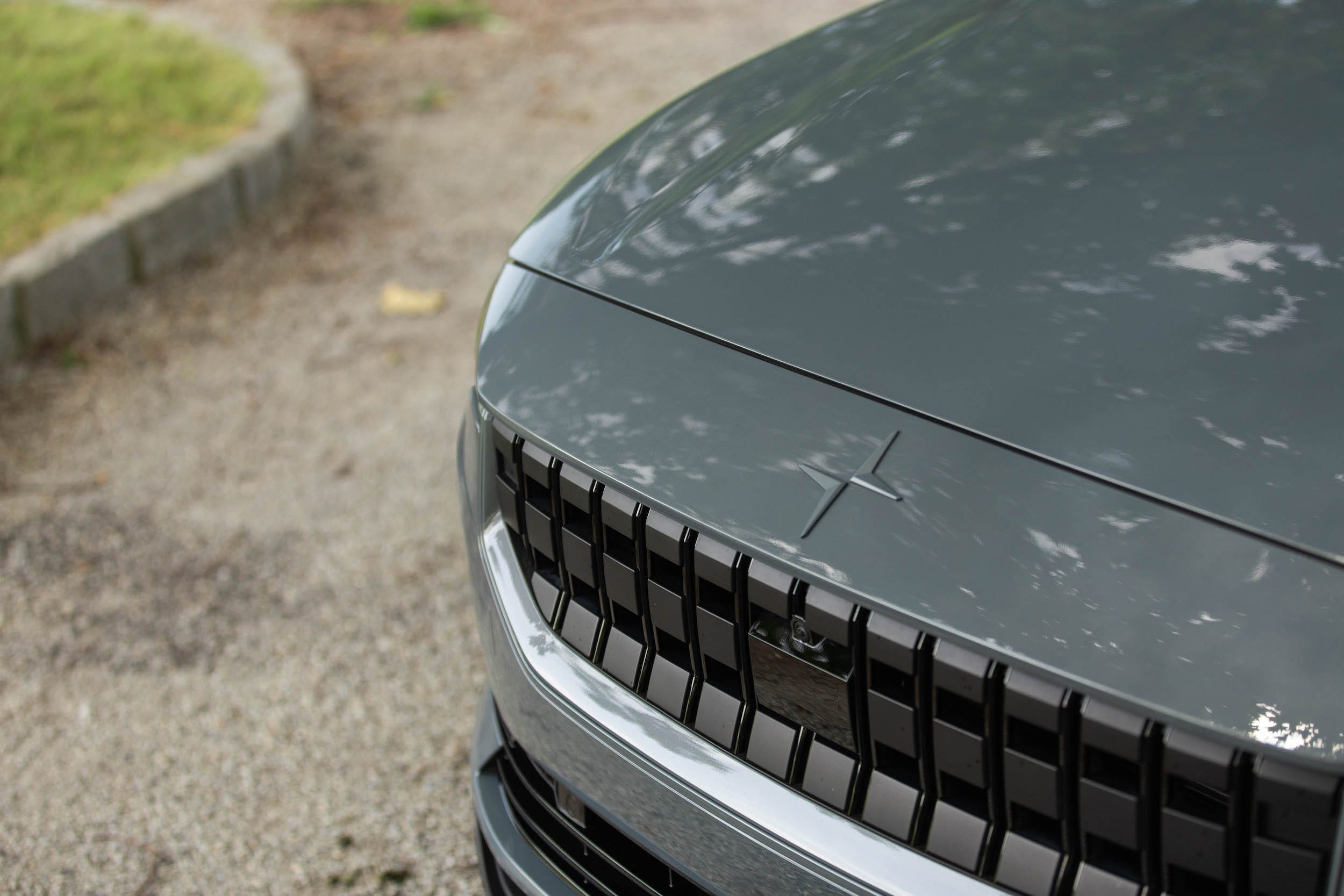
Kristen Lee/Business Insider
The rear is completely debadged. Instead of spelling out its own name in raised lettering, it just wears a long, flat, U-shaped heckblende tail light. That's it.
That sense of restraint carries into the interior, too. The color palette there is composed of either sedate Charcoal and Slate shades (the only leather option is available in Barley). Nothing is shiny or overly reflective. There's no - gasp - chrome.

Polestar
Driving the 2 felt very similar to the Model 3 I'd driven two years ago. With all-wheel drive, ample power, and a low center of gravity, the 2 felt much more agile and fleet-footed than its two-ton-plus weight would suggest. The acceleration never got old. The funny, floating sensation in my stomach when I mashed the accelerator never went away.
In fact, the power inspires so much confidence that too soon, you'll find yourself ducking and tucking in and out of traffic unnecessarily. The instant torque just makes so easy and so much fun.
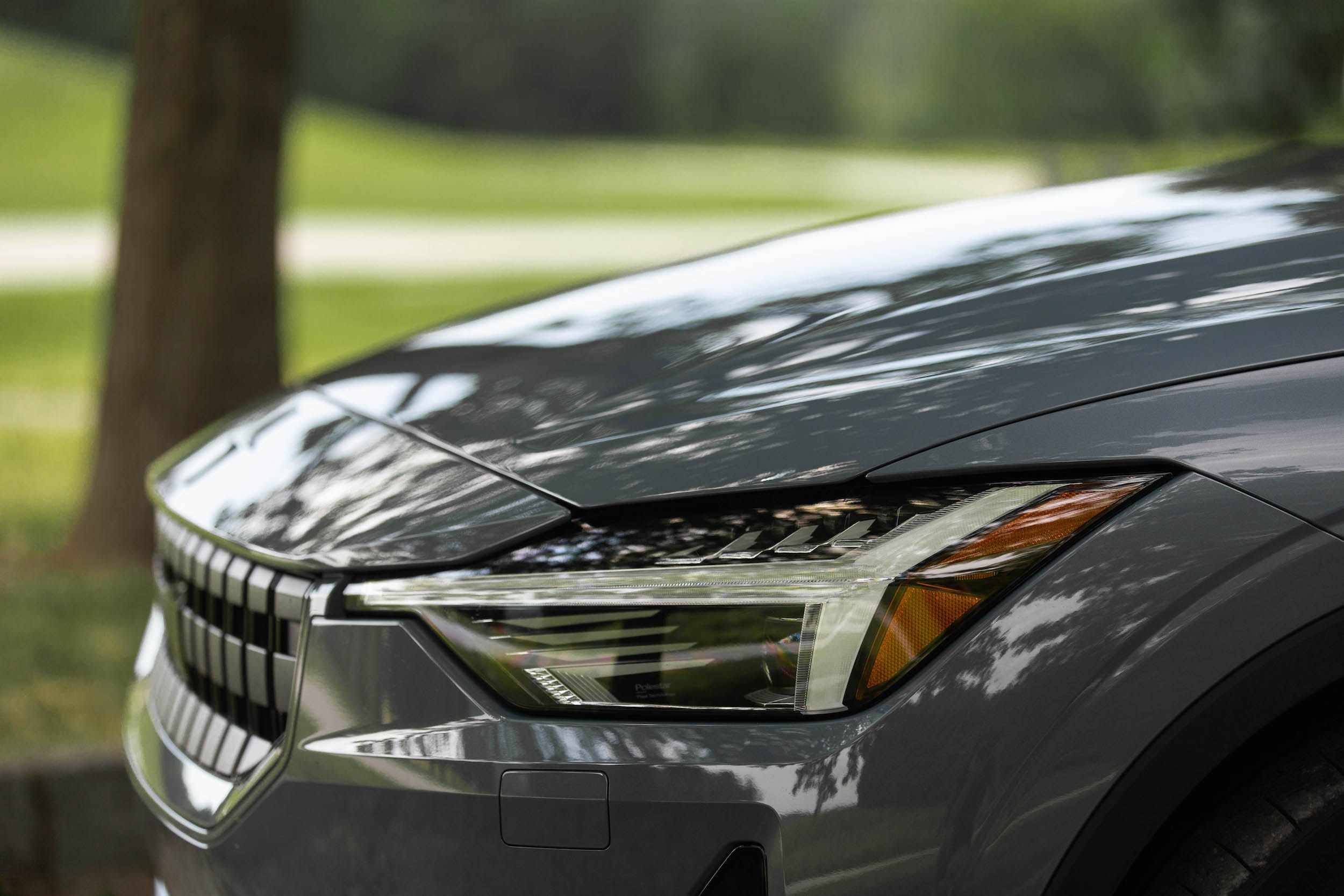
Kristen Lee/Business Insider
One-pedal driving was also fun to get the hang of. Eventually, I got the feel of it down enough to the point that I didn't need to touch the brake pedal once while navigating Manhattan stop-and-go traffic.
Obviously, plenty of fun can be had in a naturally aspirated V8 with a manual transmission. This is a different kind of fun, one that makes a high-pitched whirring when you really lean into the pedal and as the car gathers speed. No hiccups in the acceleration from gears shifting - just flawless, smooth forward momentum, and the sound of the wind washing over the car as you pick up speed.
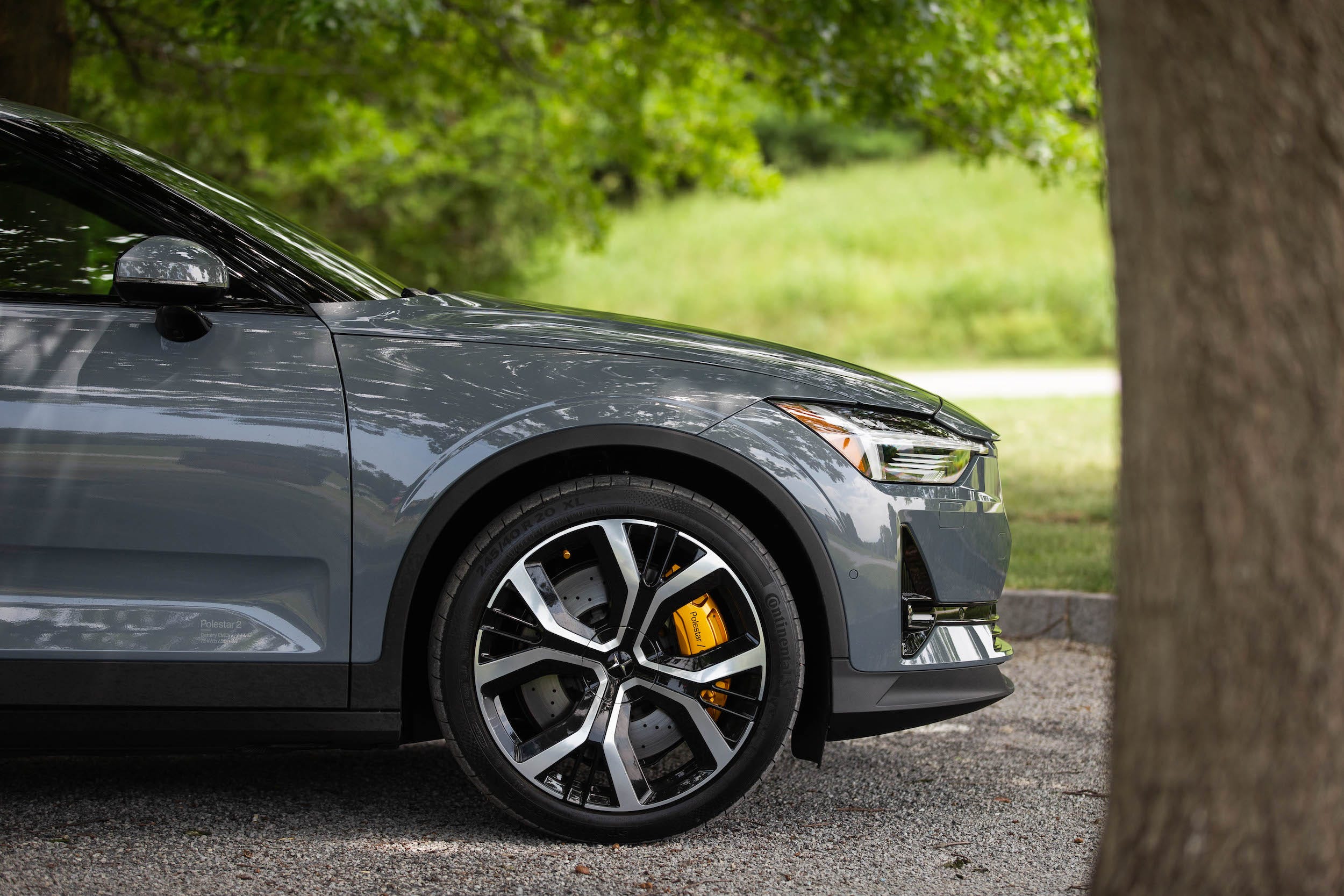
Kristen Lee/Business Insider
If you've never done it before, speeding up in an electric car sort of feels like being slingshotted forward. The car needs to build a bit into the acceleration, but once it does, it's like being yanked forward by the world's biggest rubber band. There's nothing else quite like it.
Finally, as an Android user, I was stoked that the car came with Android as its native operating system. For too long I've been frustrated by all the different operating systems each automaker uses. All of them are different. Very nearly all of them are bad. Just leave designing the OS up to the people who actually design OSes! I bellowed at the clouds.
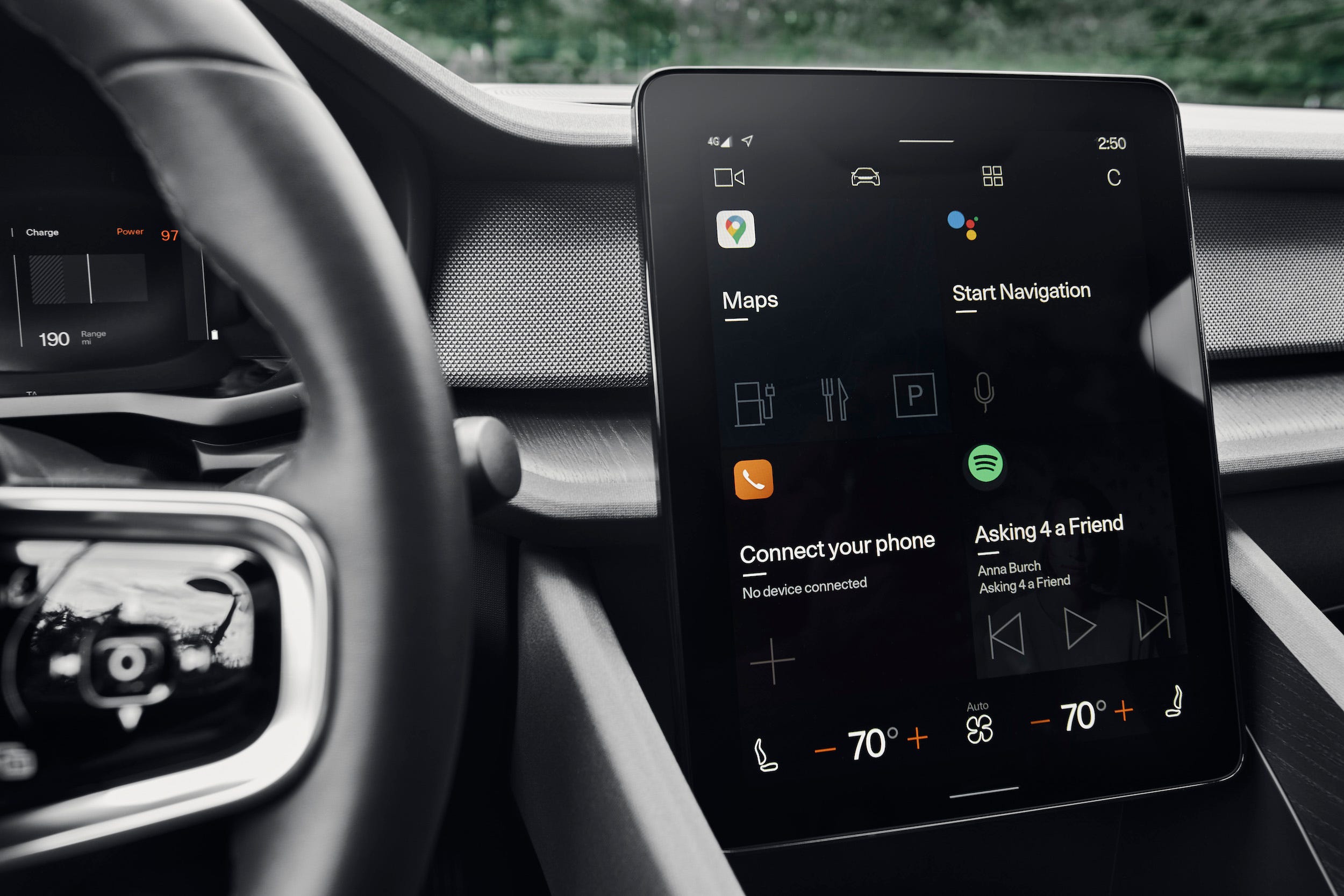
Polestar
The system's voice command is activated by the phrase "Hey, Google" or "OK, Google." With it, you can modify the climate and change the radio stations. You can ask it to navigate you to places, which is great since the 2 comes natively with Google Maps, a system I'm already used to using.
And with the car's ability to connect to a 4G mobile network, you can Google things as you would normally, as long as there is a connection.
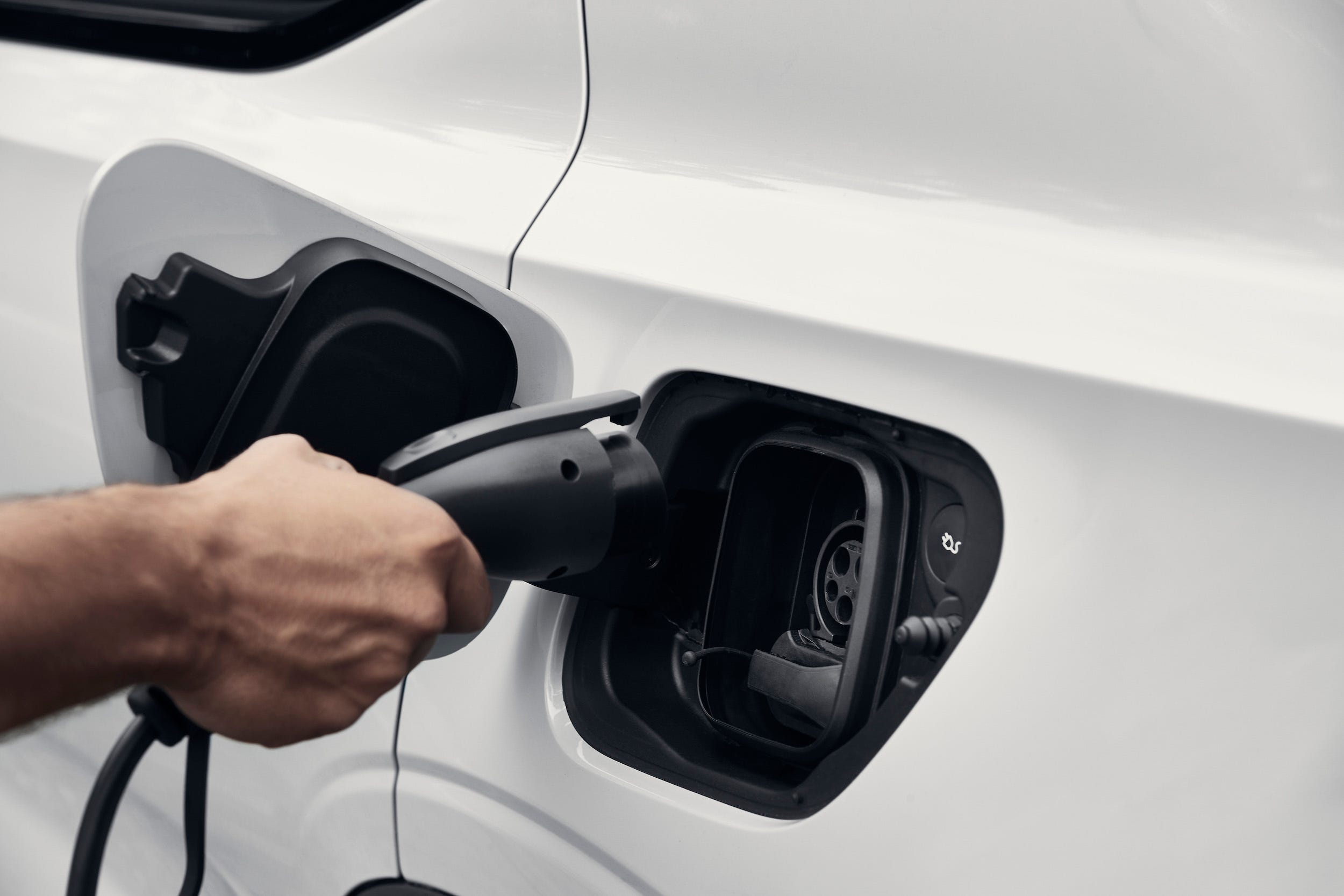
Polestar
"HEY, GOOGLE," I screamed at the car, like the serious road tester that I am. "WHAT'S AN AMPHIBIAN?"
"According to Wikipedia," the system responded smartly, "Amphibians are ectothermic, tetrapod vertebrates of the class Amphibia. All living amphibians belong to the group Lissamphibia. They inhabit a wide variety of habitats, with most species living within terrestrial, fossorial, arboreal, or freshwater aquatic ecosystems."
Satisfied, I fired off one last order. "Hey, Google. Play me Taylor Swift's 'Folklore' album on Spotify!"
I'm doing good, I'm on some new s---. Been saying "yes" instead of "no."
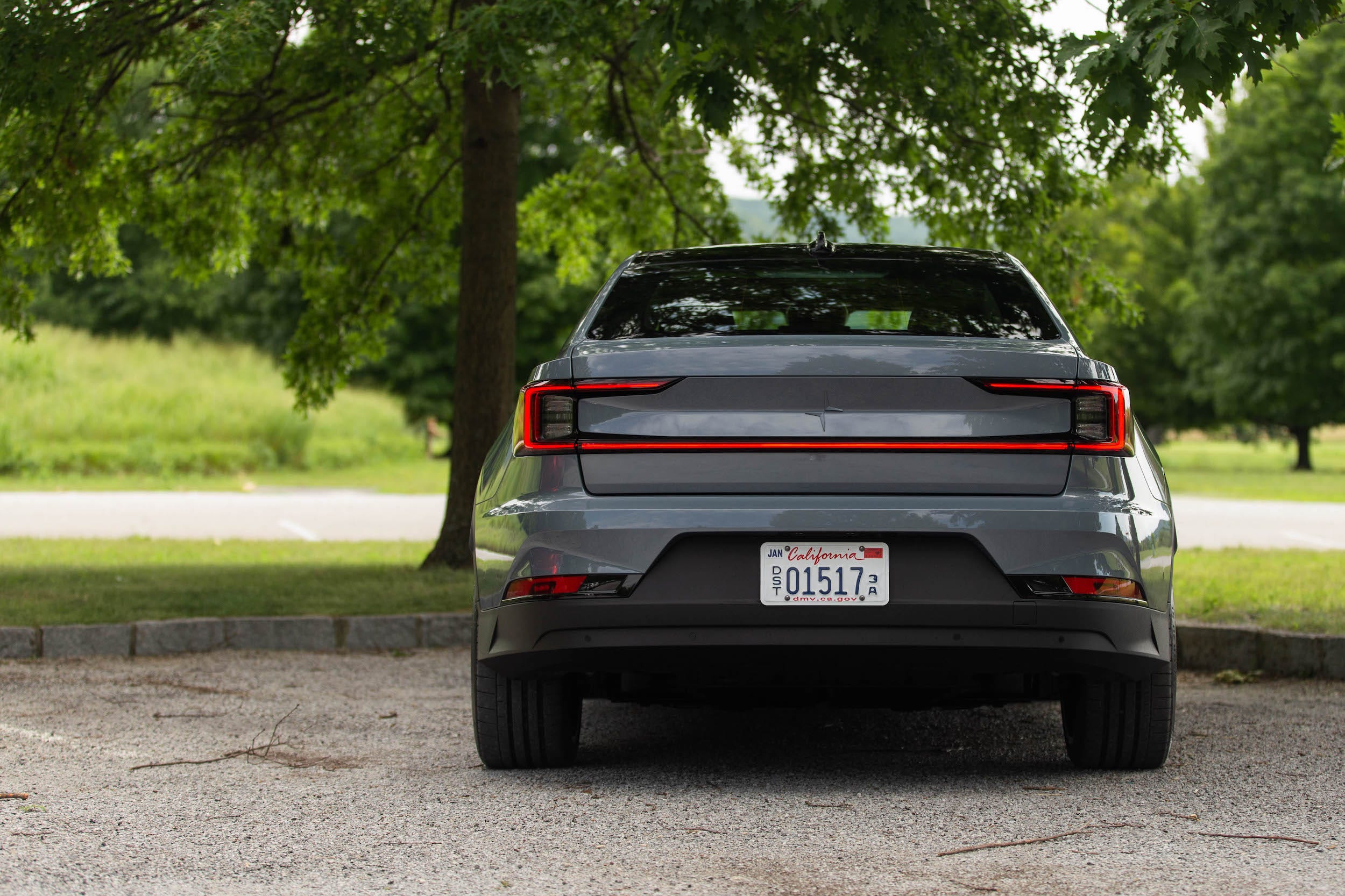
Kristen Lee/Business Insider
What falls short: Numb steering
Anti-screen folks like me will be dismayed to learn the Polestar 2's chief system access point is a big, vertical touchscreen. You can ask the Google assistant with help on some things, but you will need to interact with this screen every so often.
The Polestar attacked the curvier roads outside of Manhattan happily enough, but I still felt the steering was a bit too numb to inspire full confidence. Even on the heaviest steering setting, I still had trouble really feeling out what the front of the car was doing. For regular commuting, it's just fine. For something a little more spirited, it might give you some pause.
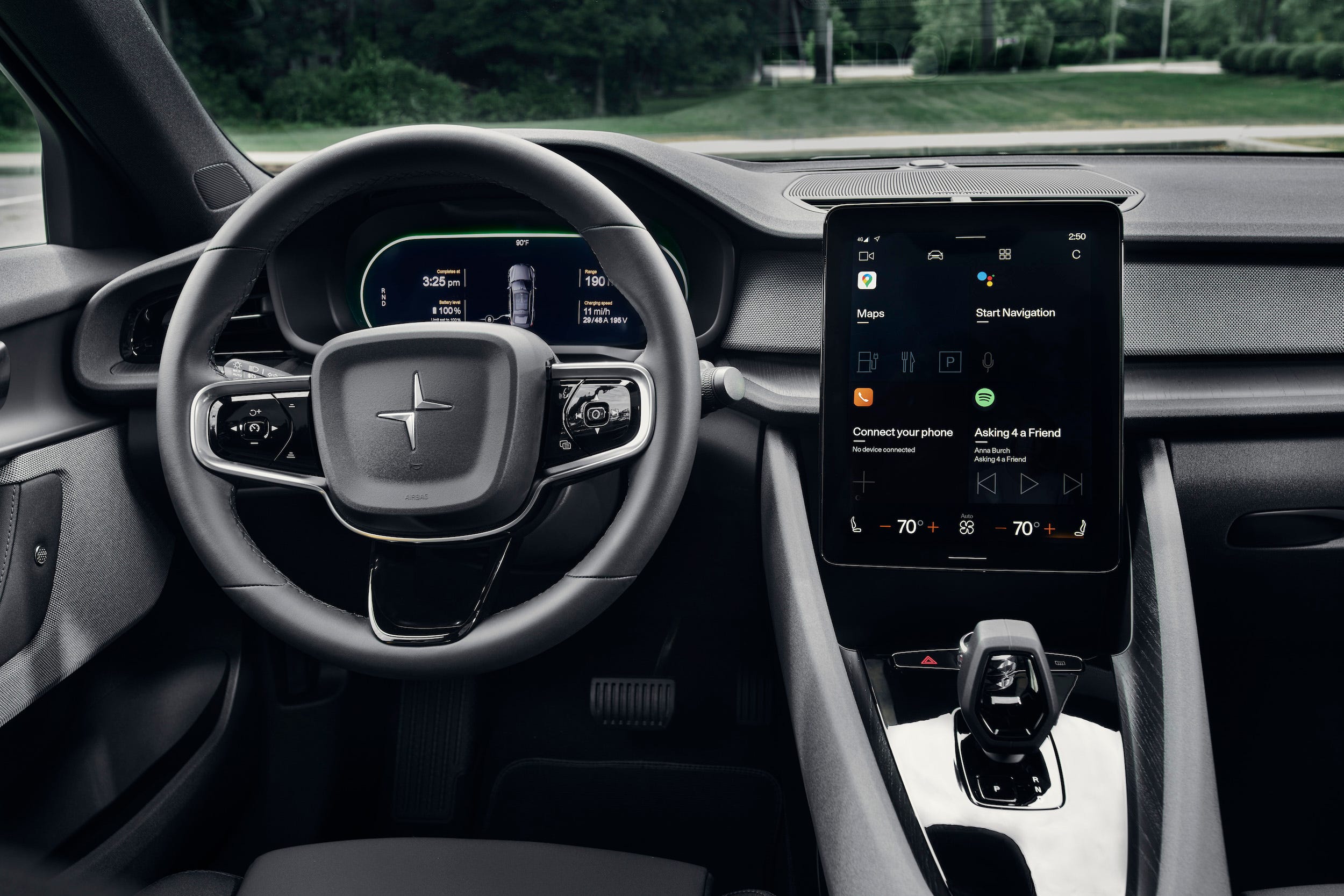
Polestar
And if you're someone who loves many exterior colors to choose from, prepare for the Polestar 2's whopping six (!) options. Void (also known as black) comes as standard. But for an extra $1,200, you can pick from thrilling shades such as Magnesium, Midnight, Moon, Snow, and Thunder. And when I say "thrilling" here, I actually mean "demure and muted."
How the Polestar 2 compares to its competitors: A range test for you
The EPA gives the 2 a range of 233 miles, compared to 263 miles for Tesla's Standard Range Plus Model 3, 353 miles for its Long Range version, and 315 miles for its Performance version.
As for my experience with the 2's range: When the media drive started in midtown Manhattan, my loaner car was at 85% battery capacity. Our lunchtime location was at the Storm King Art Center, some 70 miles north of the city via spirited driving on the curvy roads through Harriman and Bear Mountain State Parks.
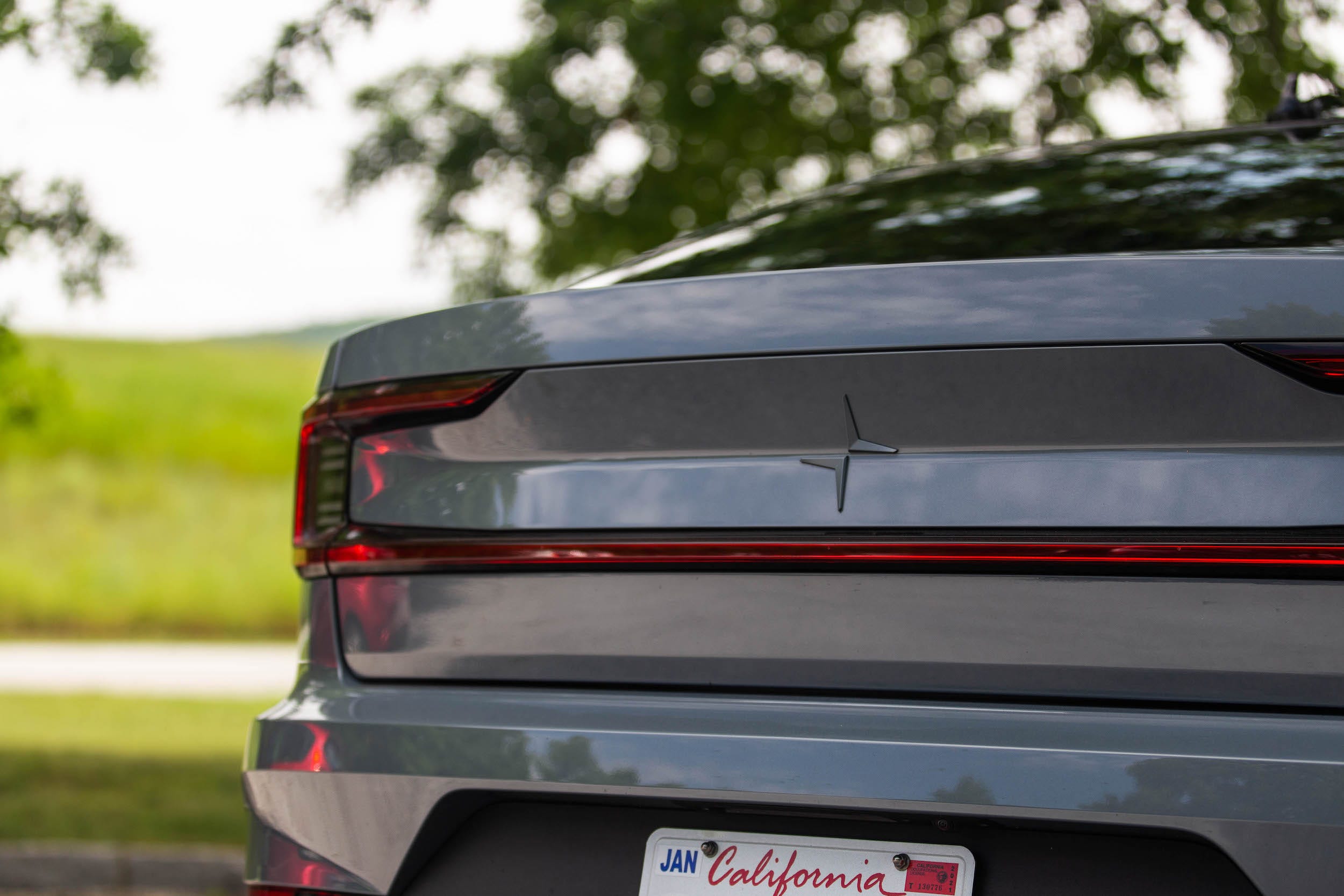
Kristen Lee/Business Insider
There was some gridlock getting out of Manhattan and about 15 minutes of bumper-to-bumper traffic on New Jersey Route 17. The ride back down to Manhattan's West Side was a quick stint down the Palisades Parkway, averaging a speed of about 60 mph.
It was about 88 degrees Fahrenheit during the entire time I had the car. I kept the interior climate at a cool 70 degrees Fahrenheit.
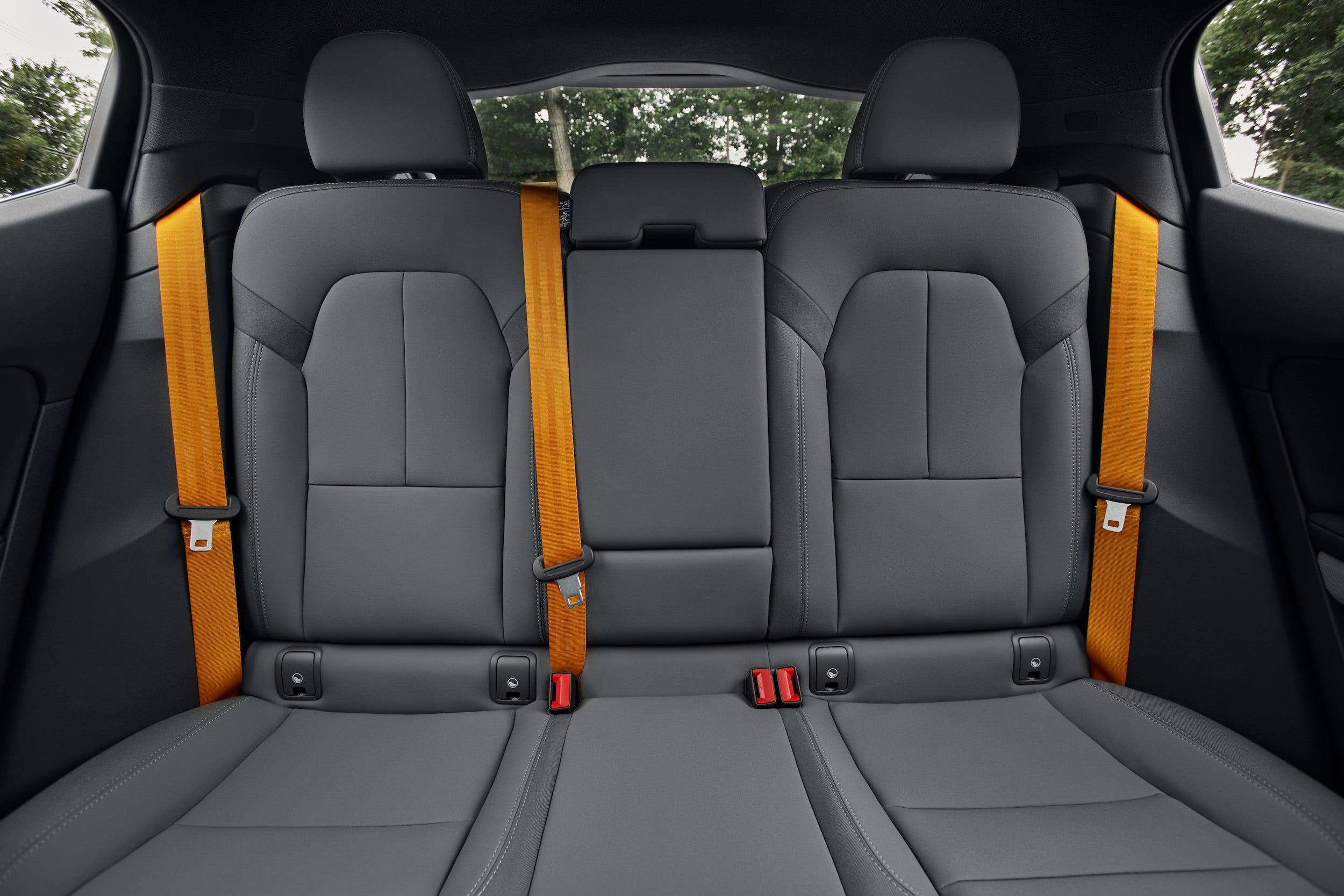
Polestar
When I returned the car to the Polestar team, it was down to 22% battery capacity, or an estimated 45 miles remaining. Another journalist in my group gave his car back with significantly less battery life remaining, but he tends to drive cars a bit harder than I do. The trip in its entirety was about 130 miles.
In the media briefing, Polestar representatives made certain to tell us about how it commissioned FT Tech, an independent third party, to conduct a real-world highway range test.
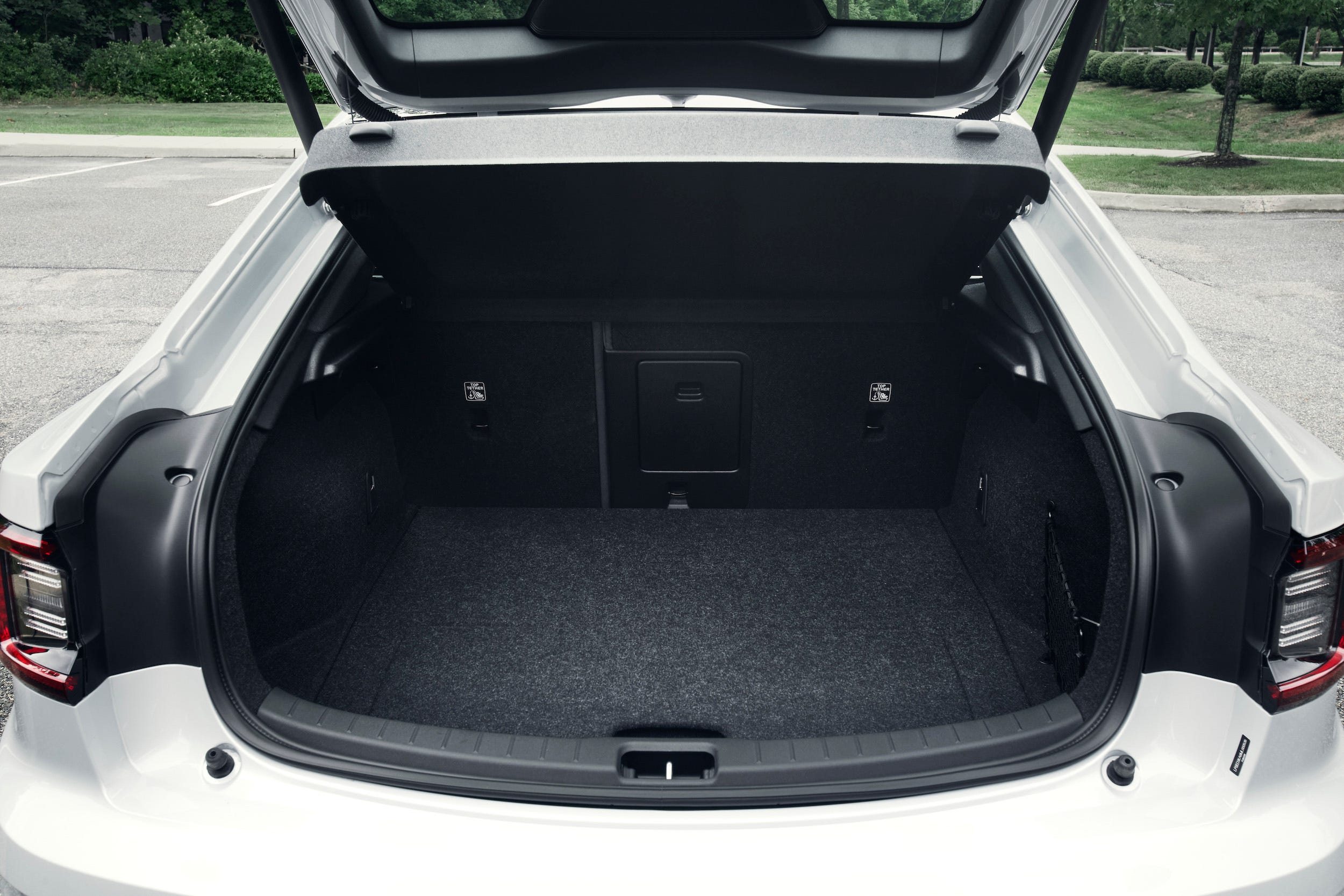
Polestar
Using a regular Polestar 2, a Polestar 2 with the Performance Package, a Tesla Model 3 Performance, a Jaguar I-Pace, and an Audi E-Tron, the FT Tech took all of the cars onto a three-mile oval closed course during an 85-degree Fahrenheit day.
All cars started at 100% battery capacity and during their drive, the climate control was set to 72 degrees. FT Tech then ran the cars at a steady 70 mph until they could not maintain that speed anymore as their batteries depleted to see how far they could go.

Kristen Lee/Business Insider
The results?
- Tesla Model 3 Performance: 234 miles
- Polestar 2: 205 miles
- Polestar 2 with Performance Package: 197 miles
- Jaguar I-Pace: 188 miles
- Audi E-Tron: 187 miles
And here's a screenshot of how much range the cars produced as compared to their official EPA-estimated ranges (this test occured before the 2 had an official EPA range, hence the 250-mile estimate).
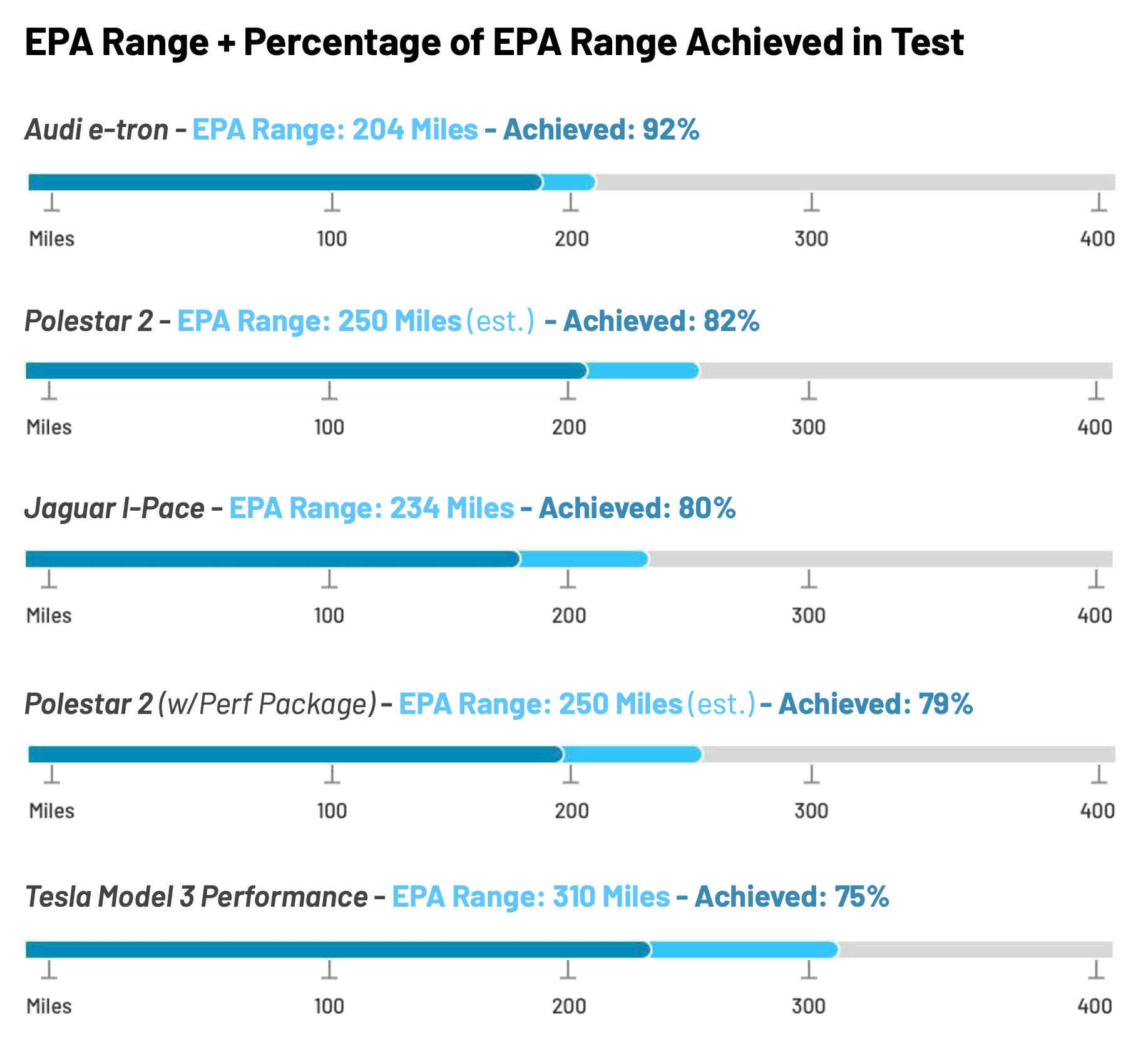
Screenshot courtesy of Polestar
Interestingly, while the Tesla did travel the furthest, it was the least efficient. According to this study, at least.
You may use that information as you will. Just bear in mind that even though this test was conducted by a third party, it was still paid for by Polestar.
Still, a 205-mile range isn't bad at all.
Our impressions: The singularity
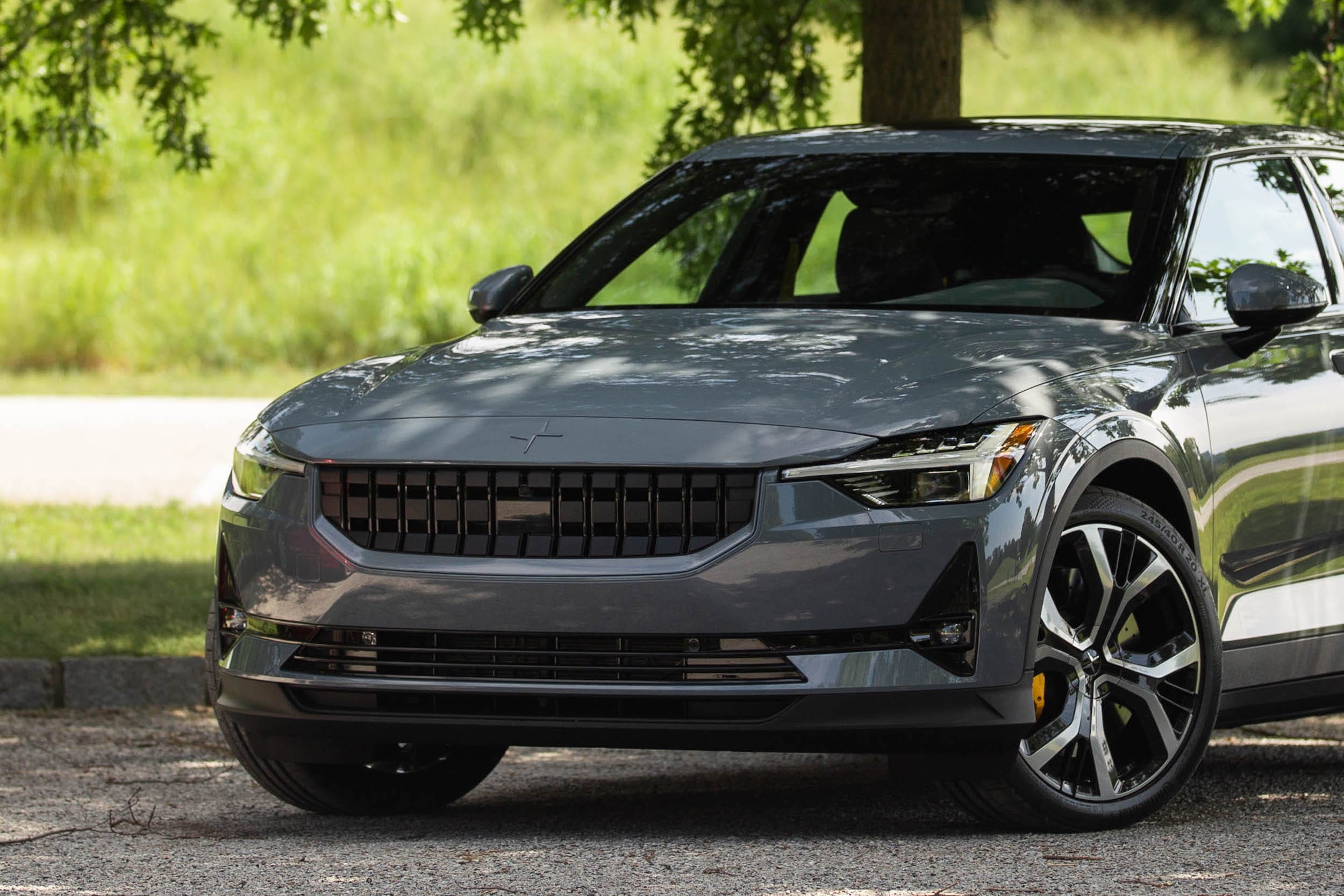
Kristen Lee/Business Insider
If I were to close my eyes and only experience what the Polestar is like while it's moving - its acceleration, its one-pedal driving characteristics, the futuristic whee it makes under load - I'd swear it was a Tesla.
This is not to say that one is better than the other. Rather, I think the two cars indicate a singularity that we are fast approaching as more and more high-performance EVs enter the market.
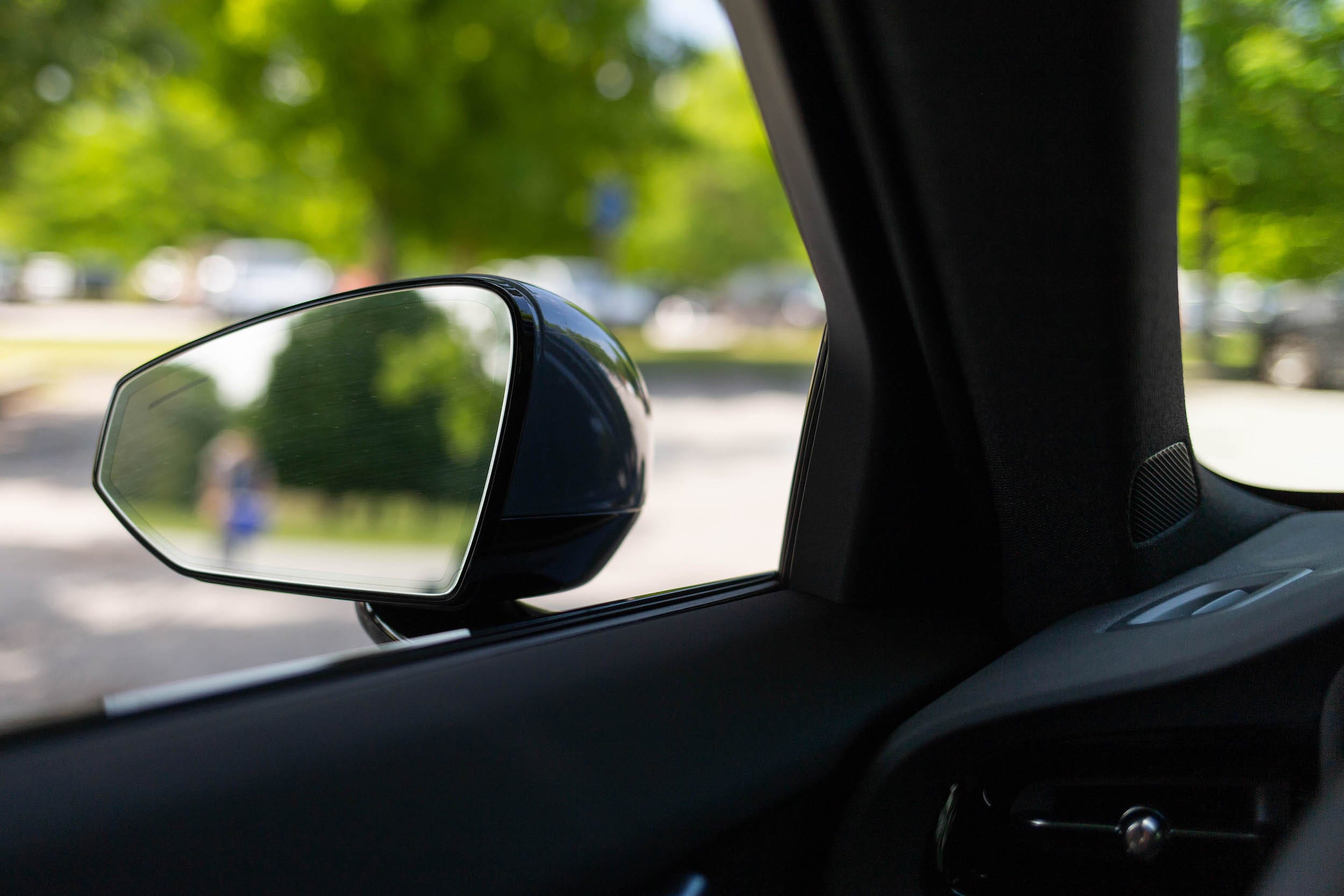
Kristen Lee/Business Insider
By design, EVs lack the many tactile driving characteristics an internal-combustion engine car offers. A four-cylinder turbocharged car with a dual-clutch automatic gearbox drives very differently from something with a naturally aspirated V8 and a manual transmission.
Because they lack such variation, I've found that all the EVs I've driven do tend to drive very similarly to each other. The only difference between them being their power output and the resulting fury of their acceleration.
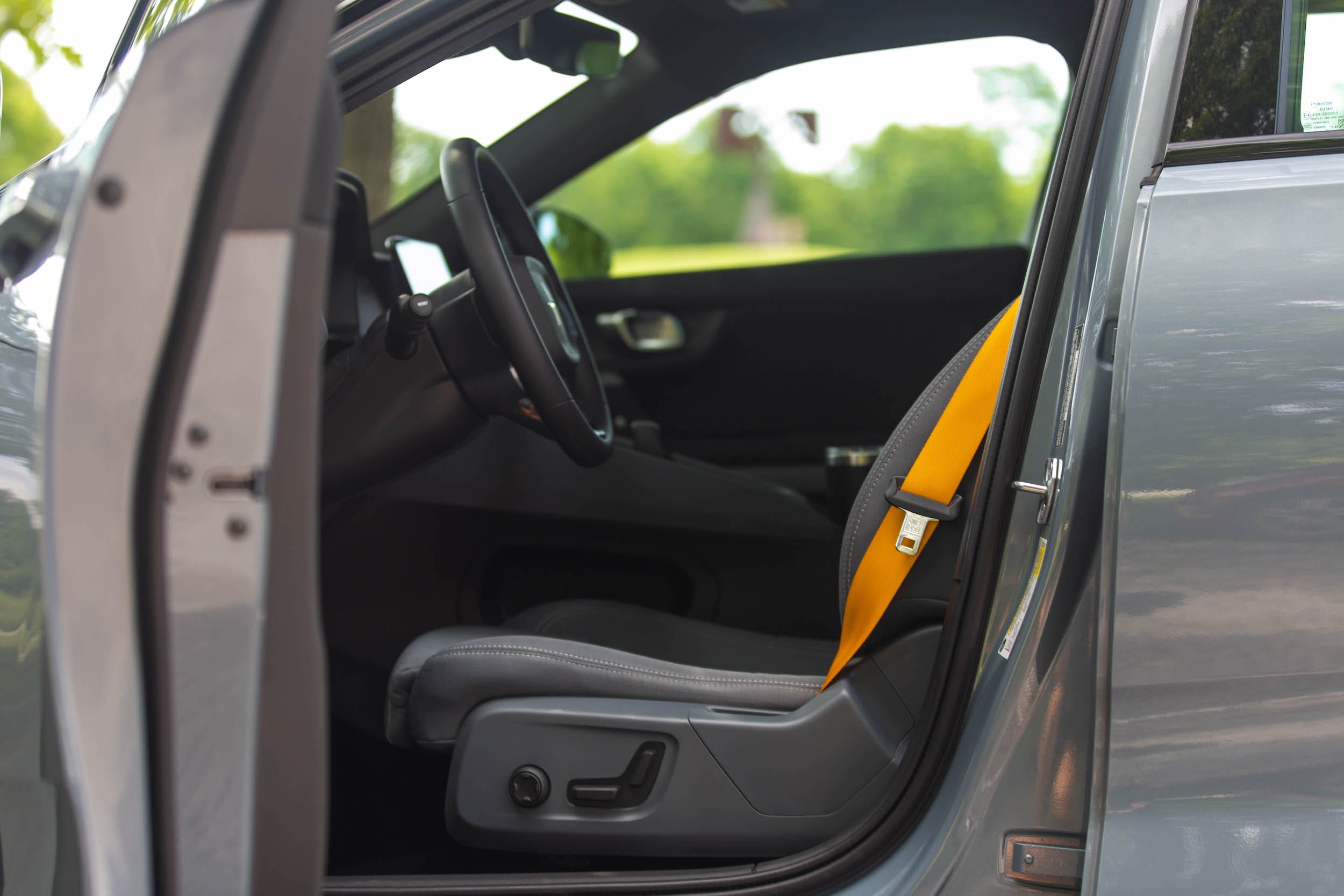
Kristen Lee/Business Insider
So, the Polestar 2 drives great. This much I was able to glean in the one afternoon I spent with it.
But what's packaged around that driving experience is also great. The 2 is a machine that has wonderfully sharp looks that'll stop passing pedestrians in their path - but not because it's flashy. It draws your eye because it doesn't look like anything else that's currently on the road.
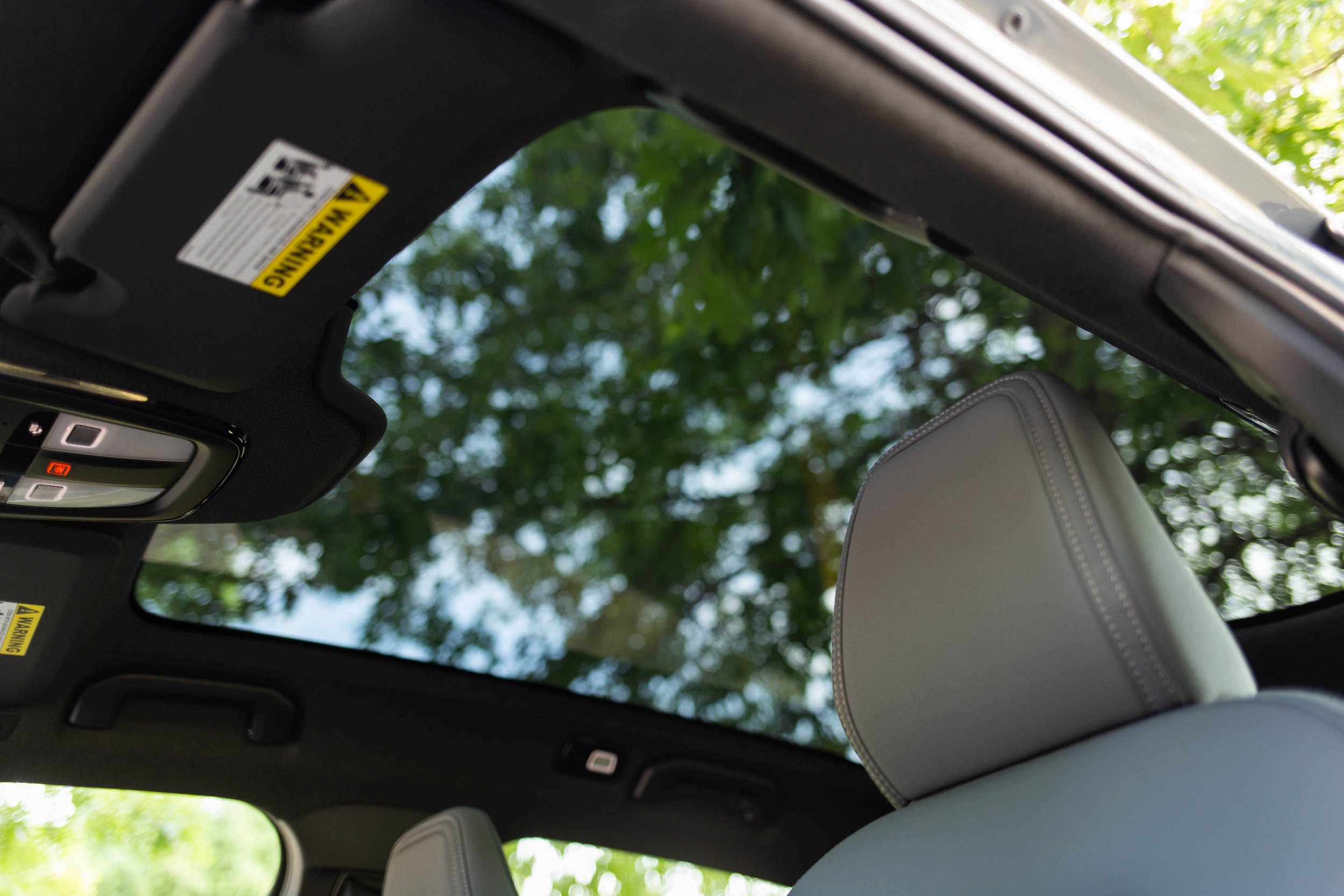
Kristen Lee/Business Insider
Sitting in the 2, driving the 2 - both worked to achieve a mood of peace and serenity. The quietness from the lack of an engine contributed to that, too, of course. But there's an unmistakable sense of quiet quality here, one that doesn't need to go around shouting to make itself heard.
For a car built in China, the 2 feels overwhelmingly Scandinavian: smartly designed and well assembled. I guess this is what happens when you buy a car company, give them a bunch of money to do what they're good at, and then leave them the hell alone.
More of this, please.
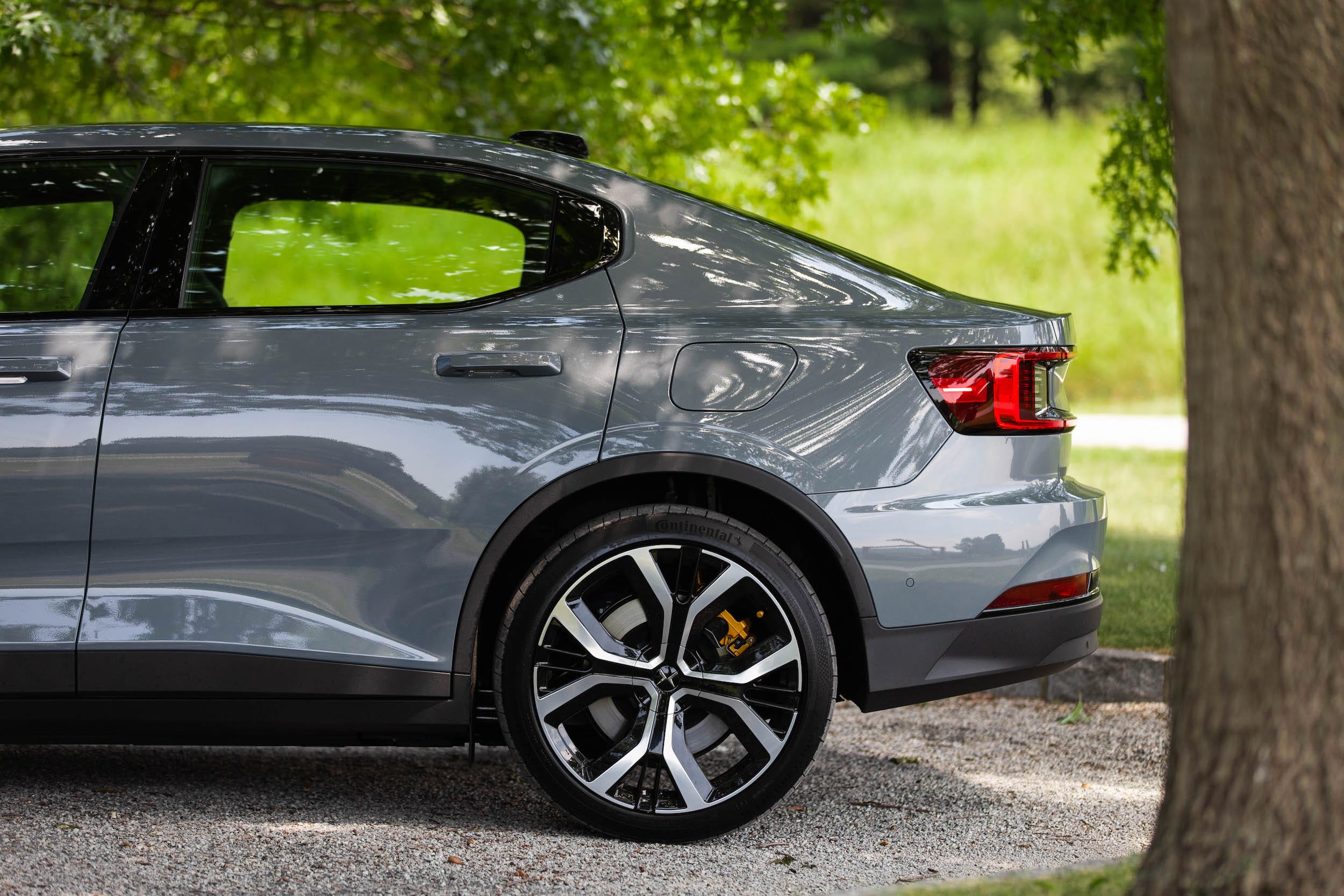
Kristen Lee/Business Insider

